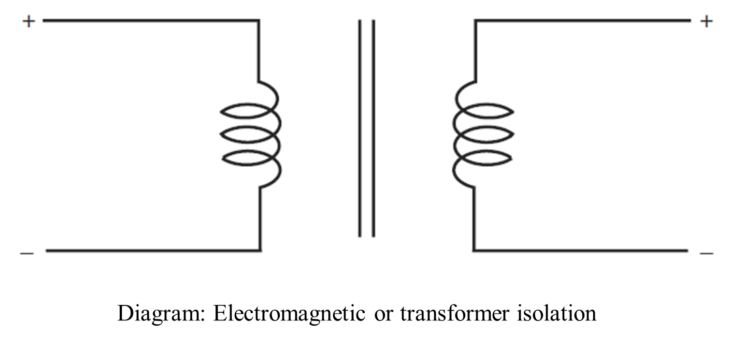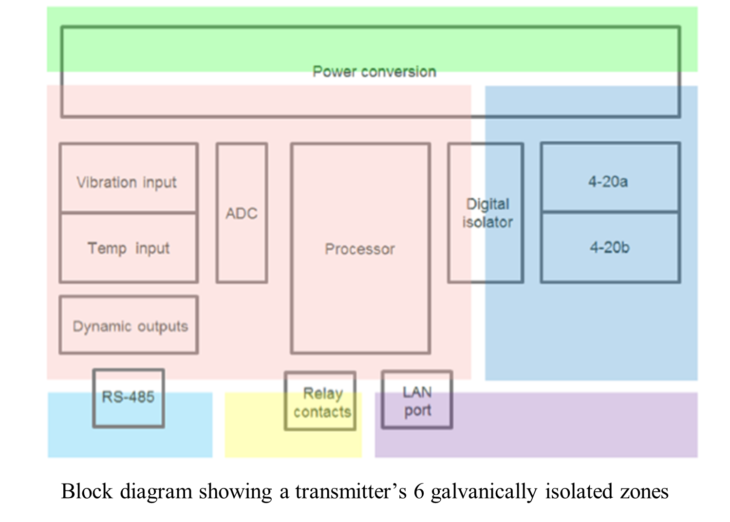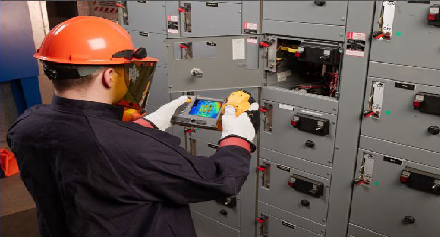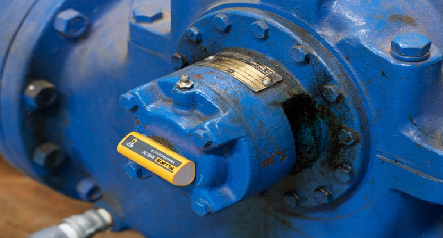The Wilcoxon iT vibration transmitters, which consist of the iT150, iT300 and iT301, are a series whose primary function is to convert an IEPE (Integrated Electronic PiezoElectric) signal into a 4-20mA output for compatibility with standard process equipment such as PLC, DCS or SCADA systems. The transmitters enable the user to maintain access to the raw voltage signal coming directly from the IEPE sensor, generally referred to as an accelerometer or velocity sensor, for signal analysis, while sending the 4-20mA output directly into a continuous monitoring system for overall amplitude trending.
While there are several other features present in these models, including field-configurability, dual-output sensor (vibration + temperature) compatibility, MODBUS communication, programmable alarms and more, one of the key features is that of the 500 VAC galvanic isolation. Galvanic isolation is extremely important for the dual roles of eliminating potential interference caused by ground loops and ensuring safety by preventing current flow through a person’s body.
Galvanic isolation was developed as a response to galvanic paths and subsequently, the signal interference they cause. A galvanic path is defined as a path in which there is a direct electrical connection between two or more electrical circuits that allow current to flow. When the signal wires in such a system have paths to ground at both ends of the loop, and the voltages at the two ground points are different, a circulating, closed current path is formed by the wires used to transmit the signal and the ground. This results in an unpredictable amount of current is introduced into the loop, creating interference and distorting the true measurement. This newly introduced current is known as a ground loop and is a common source of signal unpredictability.
A ground loop forms when the following three conditions are present in 4-20mA or other DC signals:
-
- There are two grounds
- The grounds are at different potentials
- There is a galvanic path between the grounds
To remove the ground loop, any one of these three conditions must be eliminated. For various reasons such as installation or hazardous area requirements, physical limitations of the equipment, or the impossibility of “lifting” a ground, the first two options are often not plausible candidates for removal. This leaves us with the third condition, which is where galvanic isolation comes in. When the conductive path between the differential voltages is broken, via galvanic isolation, a current cannot form, eliminating the ground loop.

Galvanic paths can be broken through several different methods including optical, capacitive, inductive, acoustic or electromagnetic isolation. Wilcoxon’s iT series accomplish this through electromagnetic isolation, also known as transformer isolation (see the circuit diagram below). This method uses a transformer to electromagnetically couple the desired signal across an air gap or non-conductive isolation gap. The electromagnetic field intensity is proportional to the input signal applied to the transformer. See the block diagram illustrating the six zones within each transmitter that are isolated.

Eliminating these conductive paths as the Wilcoxon iT transmitters do render ground loops irrelevant so long as the transmitters are wired properly. This relieves any potential headaches from ground loop faults, which are often not easily identified, and makes potential application troubleshooting that much easier when one possibility can be effectively ignored. The transmitter’s galvanic isolation also ensures no stray currents will find their way to ground through a person’s body, which could cause severe bodily harm or even death. Ultimately, galvanic isolation of signal conditioners is a high-value feature, improving performance, safety, and reliability.









